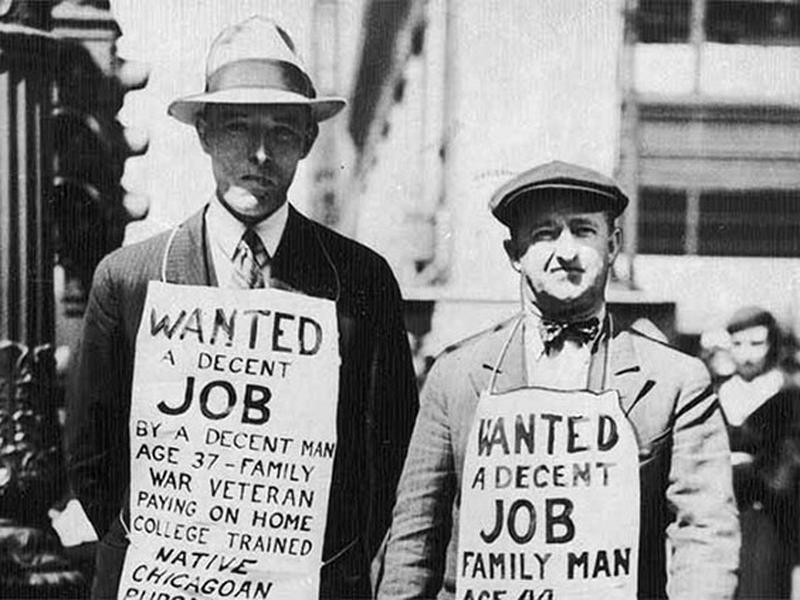Daily Life During The Great Depression
By | January 14, 2019

During the Great Depression, nearly one-fourth of Americans were unemployed. People were earning 60% less than they had been— but if people had any type of employment, they were grateful. The take-home pay was about $17 per week (less than $1,000 per year), but most people made much less than that.

How did Families Make it Work?
To afford a place to live, it was common for extended families to live together. Sometimes, different families would share one home to save money. Many ‘luxuries’ were forgotten. People would cut their hair at home instead of going to a barber or salon. Medical and dental care were also put off. Hand-me-downs were all most kids, and adults had. Even worn out shoes would be patched because there was no money to buy new ones. Saturday nights would be spent ‘window shopping,” dreaming of the things they wish could be bought.

Common Food During the Great Depression
What people ate, and how often, depended upon their circumstances and whether they lived in the city or on a farm. Many kids ate every other day. If you lived in the country, dandelion soup, cornmeal cakes, and lard would be a typical dinner. An unemployed factory worker may not go home for dinner, instead, waited in a soup line so his family could eat what little was at home. Compare that to a middle-class family, though their income was reduced, they still could purchase food at the store. Gravy, potatoes, and biscuits helped to stretch any meat they might have.

School Life During the Great Depression
Education often went by the wayside during the Great Depression. One of the biggest issues was getting to school. Most families could not afford a car, or if they had one it was used for a parent to go to work. There was no money to buy school supplies. Many school programs were closed due to lack of funding. Lots of children didn’t want to go to school because they were wearing old torn hand-me-down clothing. In order to help the family make money, lots of kids quit school to shine shoes and sell newspapers. Kids that lived on farms also had to help with spring planting and fall harvesting. Most kids dropped out of school completely by the 8th grade. By 1933, many public schools closed leaving millions of children with no school to go to. Parents would do their best to home school, but because they needed every able-bodied family member to try earning money, schooling was not a priority.

Social Life
Radio was the most popular form of entertainment during the Great Depression. It was a way to keep informed and escape. "The Lone Ranger" and "The Shadow" were very popular. Roosevelt’s ‘Fireside Chats’ made people feel close to the President. Soap operas began in the 1930s. Radios had become less expensive, so most households had one. Another way to pass the time was to play board games. "Sorry" and "Monopoly" were both released during the 1930s and became huge hits. Going out to dinner or to a movie was a very rare treat for most families.

World War II
For those living through it, the Great Depression seemed to never end. The start of WWII was the beginning of the end of the depression. Many men went into the military and the war machine started up with bomb and airplane factories, which employed the men and women not fighting the war. By the end of WWII, the economy had rebounded and the unemployment rate had dropped to just 4%. Those who experienced the Great Depression did not forget those tough times and continue to live quite frugally.

